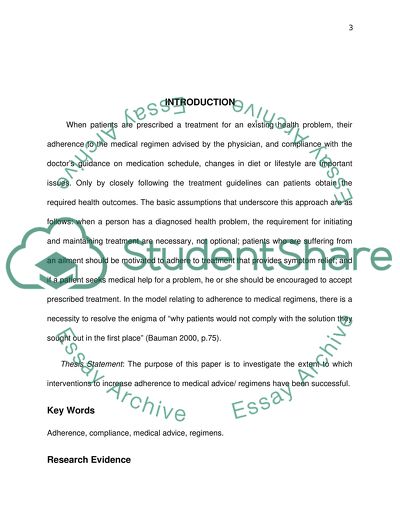Cite this document
(“The extent to which interventions to increase adherence to medical Essay”, n.d.)
Retrieved from https://studentshare.org/psychology/1395283-the-extent-to-which-interventions-to-increase-adherence-to-medical-regimens-have-been-successful
Retrieved from https://studentshare.org/psychology/1395283-the-extent-to-which-interventions-to-increase-adherence-to-medical-regimens-have-been-successful
(The Extent to Which Interventions to Increase Adherence to Medical Essay)
https://studentshare.org/psychology/1395283-the-extent-to-which-interventions-to-increase-adherence-to-medical-regimens-have-been-successful.
https://studentshare.org/psychology/1395283-the-extent-to-which-interventions-to-increase-adherence-to-medical-regimens-have-been-successful.
“The Extent to Which Interventions to Increase Adherence to Medical Essay”, n.d. https://studentshare.org/psychology/1395283-the-extent-to-which-interventions-to-increase-adherence-to-medical-regimens-have-been-successful.


